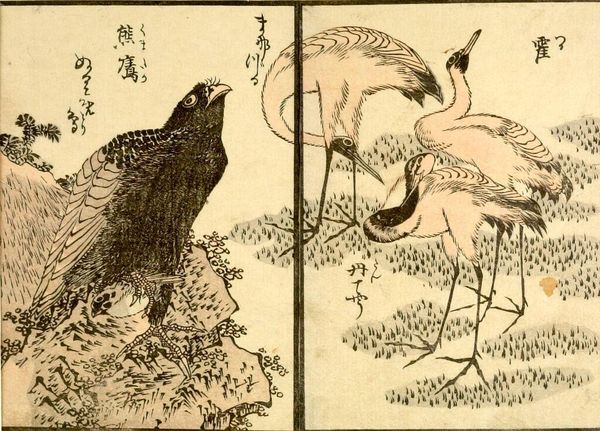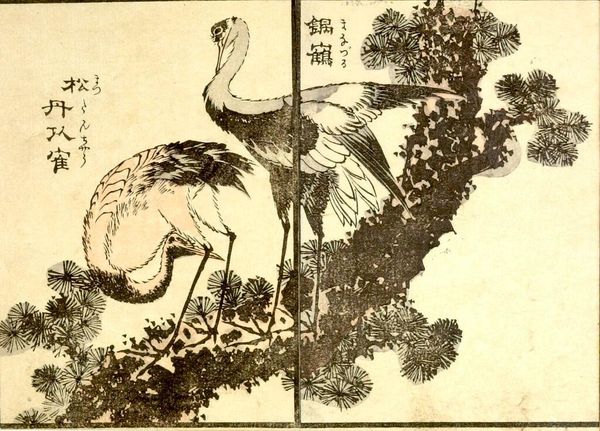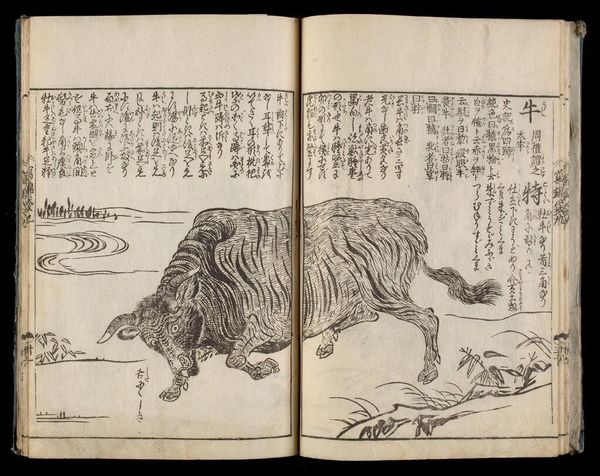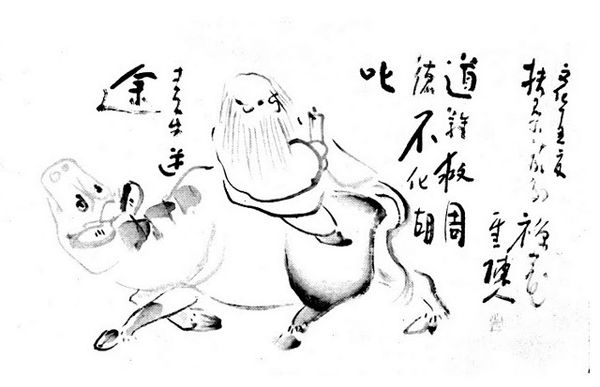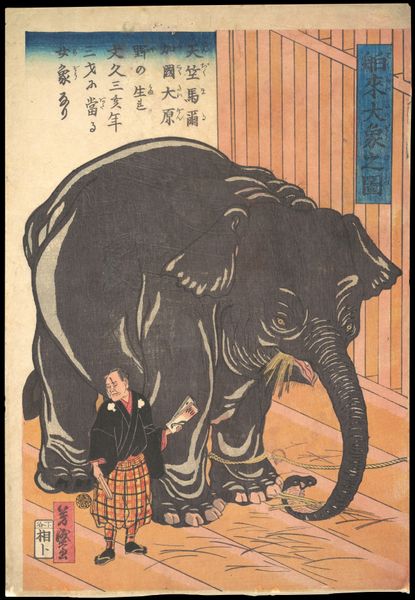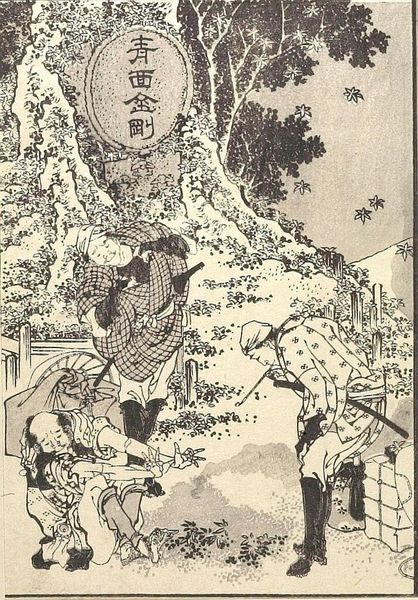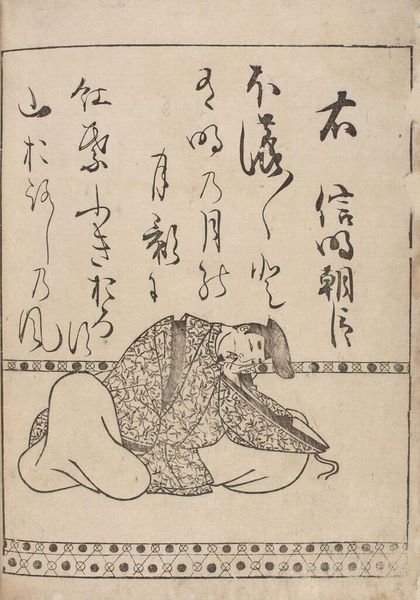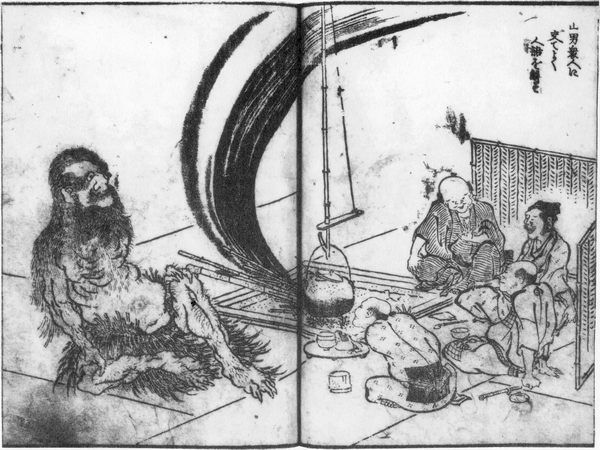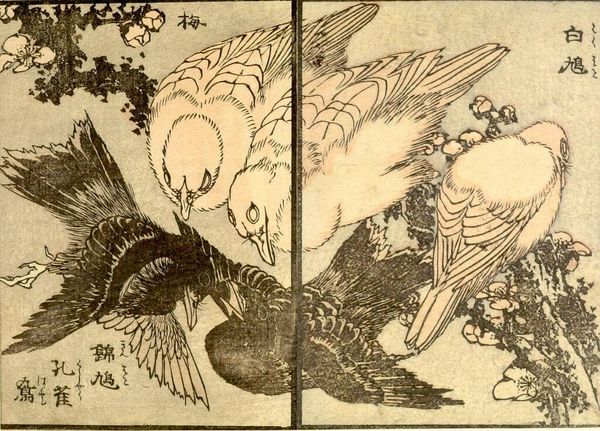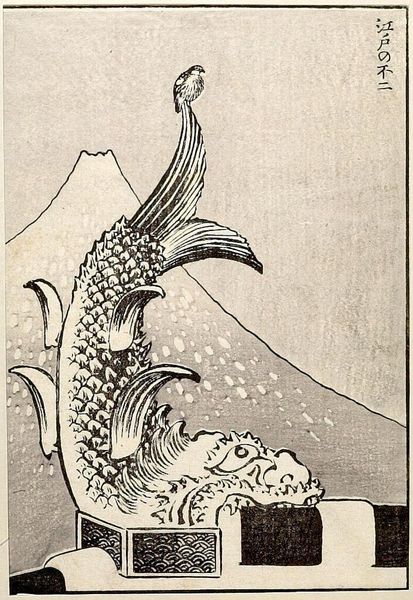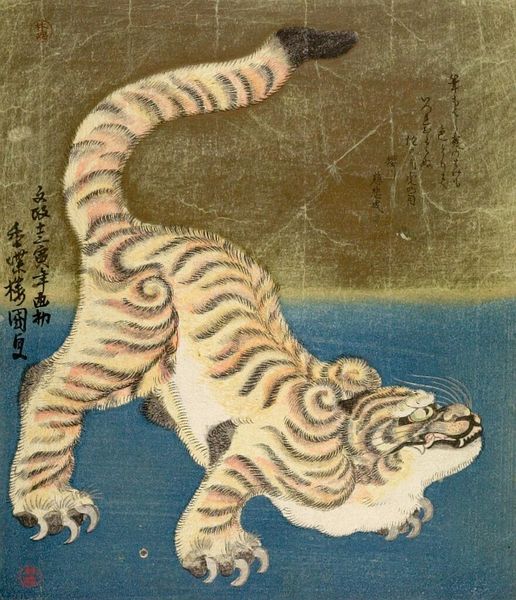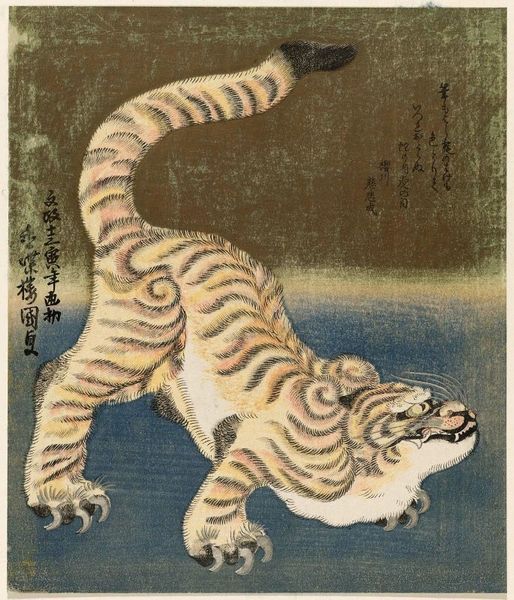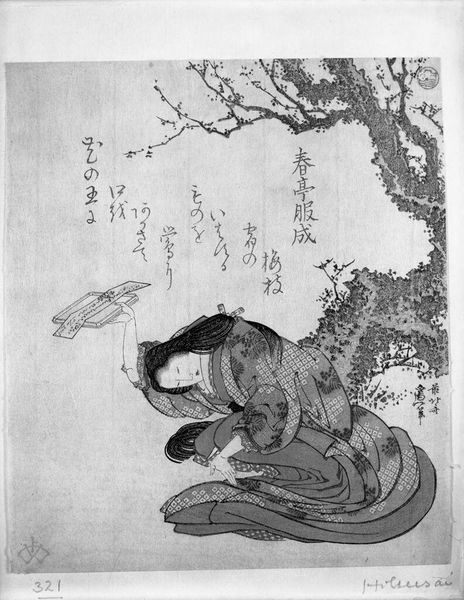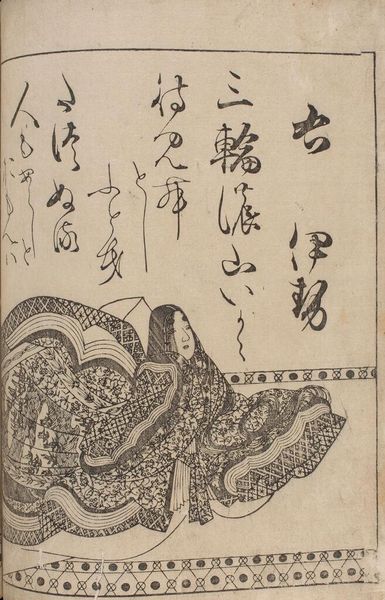
drawing, ink
#
drawing
#
narrative-art
#
ukiyo-e
#
fantasy-art
#
figuration
#
ink
Copyright: Public domain
Curator: We are looking at "A Monster Rat from the Raigo Ajari Kaisoden" by Katsushika Hokusai, executed in ink. What stands out to you about it? Editor: Scale, definitely. The sheer size of this rodent compared to the figure on its back. There’s an immediate disruption of expected power dynamics; the warrior is practically an accessory. Curator: Indeed. Hokusai masterfully employs ink washes to build volume and texture, contrasting the rat’s coarse fur with the fine lines detailing the warrior's clothing. Observe the graphic rendering of the monstrous figure and its formal construction; we have two seemingly opposite forms synthesized through Hokusai’s unique style. Editor: I am also interested in Hokusai’s engagement with the tools and processes accessible at the time. It is ukiyo-e, so presumably woodblock printing played a crucial role in distribution, shaping both the artist's hand and the artwork’s impact within its social milieu. Who was encountering these images and in what settings? The narrative seems ripe for mass consumption. Curator: Semiotically, we might read the monstrous rat as representative of chaos, challenging established order. Note how the disproportion of its form, with emphasis given to its menacing claws, enhances the sense of unease. The negative space around it sharpens the impact on the viewer’s experience and vision. Editor: And how does this portrayal connect to other representations of power, labor, and subversion during the period? Consider the conditions in which these prints were created and how accessible they were for the rising merchant classes to be affordable pieces. Was Hokusai intentionally crafting commentary on the social hierarchy? The subject of a man riding the back of a monster rat surely subverts existing assumptions of superiority. Curator: Absolutely, such an interpretation would definitely find support when considering its thematic focus, figuration, and fantasy art status. What remains is the mastery of expression within the limited material scope used by Hokusai. The ability to express such dynamic vigor out of ink applied to the paper itself. Editor: For me, its significance lies in its capacity to bridge the gap between high and low culture through readily available materials. It makes you consider who had access and who felt represented in the process of image making, as much as it is technically remarkable and unique.
Comments
No comments
Be the first to comment and join the conversation on the ultimate creative platform.
